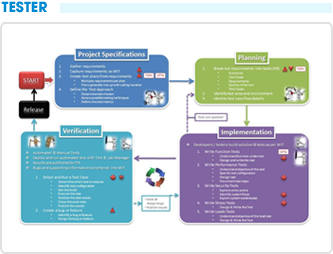024 38560777
Floating-point (Kiểu dấu chấm động (Số thực))
Trong tin học, dấu chấm động được dùng để chỉ một hệ thống biểu diễn số mà trong đó sử dụng một chuỗi chữ số (hay bit) để biểu diễn một số hữu tỉ.
Thuật ngữ dấu chấm động xuất phát từ chỗ hệ thống dấu chấm động có dấu chấm cơ số (tức là dấu chấm thập phân trong trường hợp dùng hệ thập phân thường ngày hoặc là dấu chấm nhị phân trong trường hợp dùng bên trong máy tính) không cố định mà có thể thay đổi vị trí của nó bất kỳ đâu trong các chữ số có nghĩa của số cần được biểu diễn. Vị trí này được mô tả một cách độc lập trong biểu diễn cụ thể của từng số. Đã có nhiều hệ thống dấu chấm động khác nhau được dùng trong máy tính; tuy nhiên, vào khoảng hai mươi năm trở lại đây thì hầu hết các máy tính đều dùng cách biểu diễn tuân thủ theo chuẩn IEEE 754.
By English
In computing, floating point describes a method of representing an approximation of a real number in a way that can support a wide range of values. The numbers are, in general, represented approximately to a fixed number of significant digits (the mantissa) and scaled using an exponent. The base for the scaling is normally 2, 10 or 16. The typical number that can be represented exactly is of the form: Significant digits × baseexponent
The idea of floating-point representation over intrinsically integer fixed-point numbers, which consist purely of significand, is that expanding it with the exponent component achieves greater range. For instance, to represent large values, e.g. distances between galaxies, there is no need to keep all 39 decimal places down to femtometre-resolution (employed in particle physics). Assuming that the best resolution is in light years, only the 9 most significant decimal digits matter, whereas the remaining 30 digits carry pure noise, and thus can be safely dropped. This represents a savings of 100 bits of computer data storage. Instead of these 100 bits, much fewer are used to represent the scale (the exponent), e.g. 8 bits or 2 decimal digits. Given that one number can encode both astronomic and subatomic distances with the same nine digits of accuracy, but because a 9-digit number is 100 times less accurate than the 11 digits reserved for scale, this is considered a trade-off exchanging range for precision. The example of using scaling to extend the dynamic range reveals another contrast with fixed-point numbers: Floating-point values are not uniformly spaced. Small values, close to zero, can be represented with much higher resolution (e.g. one femtometre) than large ones because a greater scale (e.g. light years) must be selected for encoding significantly larger values.[1] That is, floating-point numbers cannot represent point coordinates with atomic accuracy at galactic distances, only close to the origin.
The term floating point refers to the fact that a number's radix point (decimal point, or, more commonly in computers, binary point) can "float"; that is, it can be placed anywhere relative to the significant digits of the number. This position is indicated as the exponent component in the internal representation, and floating point can thus be thought of as a computer realization of scientific notation.
Over the years, a variety of floating-point representations have been used in computers. However, since the 1990s, the most commonly encountered representation is that defined by the IEEE 754 Standard.
The speed of floating-point operations, commonly referred to in performance measurements as FLOPS, is an important characteristic of a computer system, especially in software that performs large-scale mathematical calculations.
Like Doanh nhân số







































